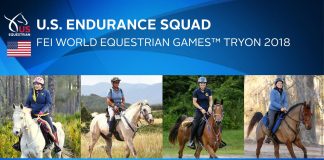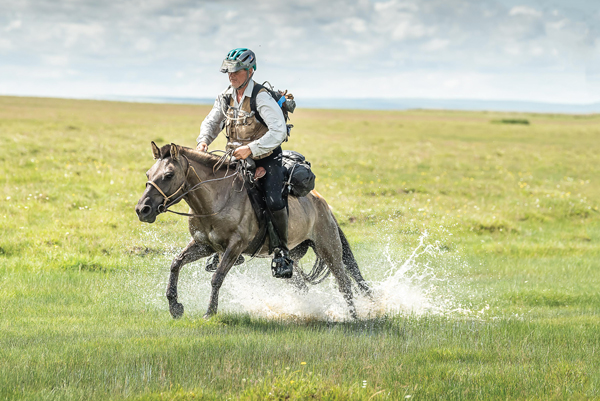
To win the world’s longest horse race, Robert Long employed equal parts preparation and smarts. In August, the 70-year-old became the oldest winner of the Mongol Derby, which involves racing more than 600 miles across the Mongolian Steppe, recreating Genghis Khan’s horseback messenger system of the early 1200s. Riding approximately 12 hours each day for eight days, Long beat out 41 top riders from around the globe.
Preparations
So what prompted this cowboy to join the endurance riders a world away?
“It was kind of a lark,” Long admits. While visiting friends, they introduced him to a movie about the race called All the Wild Horses.
“It took me about 20 minutes to decide it was something I should do,” says Long.
After researching the details that fall, Long went all in. “I couldn’t think or talk or behave without worrying or working on the derby,” he says. “It was an all-consuming preparation.”
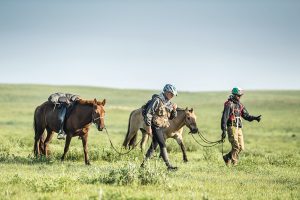
First, he moved his horse and gear down to Arizona for the winter and made connections in the endurance world.
Long borrowed Arabian horses,riding four every other day, 20 miles per horse, and competed in 50-mile endurance races. When the weather heated up in March, he headed back to Idaho and began conditioning reining and barrel racing horses at a ranch in Cambridge. He worked each horse about 10 miles a day.
“I’d get on a horse at 6 a.m. and still be riding at 8 that night, every day,” says Long.
Next up, he visited past derby veterans, including 2016 winner Marcia Hefker-Miles of New Mexico, who gave him tips for nutrition and water safety, among other things. This included using iodine tablets in the water along with flavoring and electrolytes, plus a daily nutritional supplement. Back in Idaho in the weeks leading up to the race, he tested all his gear, and even slept outdoors.
Starting Out Strategically
The race provides saddles and local Mongolian horses, but riders bring their other gear, including stirrups and fenders. Long also packed a bucking roll from one of his saddles.
“It was instrumental in keeping me in the saddle,” he says. “I’d get on these little waspy Mongolian horses, and they’d crow-hop around and try to squirrel out from under you. Those bucking rolls really did the trick for me.”
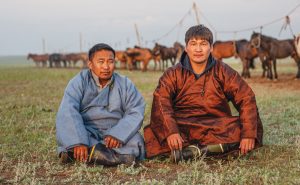
After a drawing to determine initial horses, riders picked mounts on a first-come, first-served basis. In all, Long switched horses 28 times during the race.
“The Mongolian horses are heavy in the front end and lighter in the hindquarters,” he says.“Based on my coaching from the previous derby riders, I was looking for a taller horse that was slender and had a big shoulder on him.”
Long’s tips from past winners included befriending the local horse handlers. Small gifts brought from home made quick friends, and the handlers would suggest the best horses.
In addition, Long didn’t follow the safest routes set by the race organizers, instead setting his GPS coordinates to find shortcuts. Sometimes, however, those shortcuts took him away from water sources. On a mountaintop far from the main route that followed a river, the oldest winner of the Mongol Derby met a local woman doing her wash.
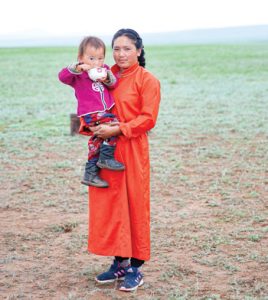
“By then I’d learned enough Mongolian words that I could convey that I needed horse water,” he says. “Her two little boys were playing in a galvanized tub of water. She shooed the boys out, and I watered my horse in their play tub. I took pictures of her, and she took pictures of me. It was a really fun experience. I got on my horse and took off, and that’s when I actually moved ahead. I was in the lead from then on. I never looked back after that.”
While many riders slept in gers, or yurts, set up at horse stations, Long preferred to stay with Mongolian families who follow the race and welcome guests.
“I didn’t stay at horse stations and let the rest of the riders catch up with me,” he says. “That would have collapsed my lead.”
Time with the locals also turned out to be a highlight of the race experience.
“That’s the part I enjoyed the most,” Long says. The families displayed amazing hospitality, taking care of his horse and cooking him meals.
Twin girls were sitting on a corral singing songs and watching the sunset as he rode up one night. Their mother made sure he had fresh milk from the family cow before he took off in the morning. Gifts of stickers, barrettes and lip balm were given to the host children.
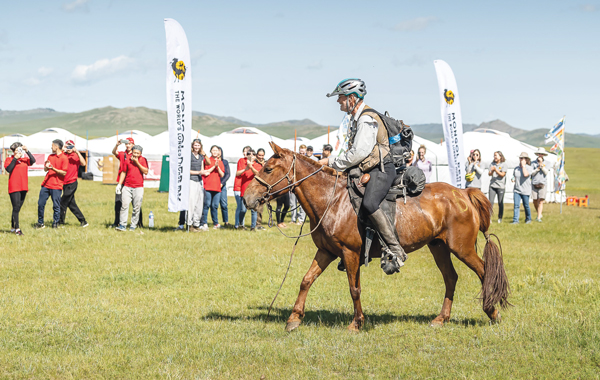
Racing to the Finish
As with stateside endurance races, vet checks ensured the horses stayed healthy during the race. An international team of all-star vets, including three renowned lameness specialists, checked the horses and dished out stiff penalties for issues they found. Long finished the race with no vet penalties, in part due to a pre-check process he developed.
“Two or so miles out I would slow down, lower the bit out of the horse’s mouth and bring it up under his chin so that the headstall made a halter,” he says. “That gave him time to relax and eat, and then he could drink comfortably. I’d hit the vet stations, and my horses would be calm, their heart rates would be down, and I’d make some fast turnarounds.”
The race is organized by The Adventurists, and Long credits them with excellent organization.
“The message is that preparation trumps youth,” he says of his win. “I really did have some good competition. These guys were professional endurance riders. They kept pushing me, and I thrive on that kind of competition.”
Long finished the race the race two-and-a-half hours ahead of the next rider.
Now that he’s back home in Idaho, this oldest winner of the Mongol Derby plans to have several shoulder injuries that happened before the race repaired. Then he’ll get to work with his 3-year-old ranch horse versatility prospect and do some packing trips.
Never one to rest on his laurels, Long also plans to take a foray into reining.
This article about Robert Long, the oldest winner of the Mongol Derby, originally appeared in the December 2019 issue of Horse Illustrated magazine. Click here to subscribe!




